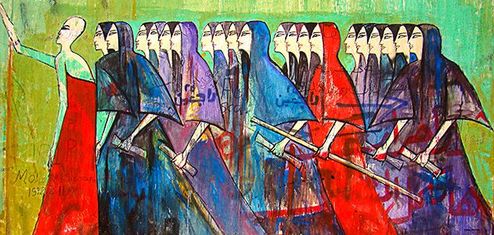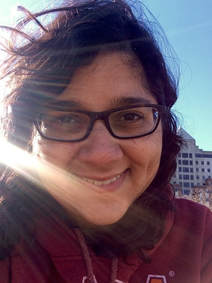
Identity, Culture and Resistance.
Offered by Nadine El Nabil
On Sunday mornings from 10:00 am to 1:00 pm and evenings from 5:00 pm to 8:00 pm
Offered by Nadine El Nabil
On Sunday mornings from 10:00 am to 1:00 pm and evenings from 5:00 pm to 8:00 pm
Course description:
How does culture shape, reinforce and challenge individual and collective identities? How do power and hegemony operate within and through culture? What roles do culture and creative spaces play in maintaining, and more importantly, challenging hegemonic identities and politics? How are art and cultural productions tools of control, reflections of realities, responses to society and politics, and mediums of survival, negotiation, subversion, resistance and (re)imagination?
Employing intersectional feminist and cultural studies lenses, this interdisciplinary course aims to utilize art, creative production and cultural spaces to engage with themes about identity, such as language, gender, sexuality, nationalism, religion, race, desire, family and friendship. The course will be built on engagement with academic readings as well as creative sources from art and culture to explore these topics, with the underlying understanding that ‘text’ goes beyond written language and exists in all artifacts (oral storytelling, music, fashion, social media production, television (talent shows, talk shows, soap operas, game shows, mosalsalat), film, food, architecture, spoken word poetry, graffiti, photography, advertisements, and other mediums). Relying on lived realities, the self and the body, students will share their own experiences and bring in cultural artifacts and observations relevant to their lives as entry points to these discussions. The course aims to disrupt the hegemonic construction of knowledge production as belonging to singular academic theorists and thinkers, and instead centers the knowledge that every one brings to the space, while engaging in critical and creative reflections on this knowledge we each carry and produce.
The course will include various creative activities and students will be expected to present/share/submit a self-portrait and/or piece of creative resistance in whatever form they choose (written, spoken, song, dance, poetry, film, etc.) at the end of the course. Students will also be asked to reflect each week on how they personally relate to themes discussed in class through a visual or written ‘journal’.
Why Apply:
The course is dedicated to the many cultural producers and artists negotiating and resisting through their work.
General Recommended Reading for Course & Methodology:
Abdel-Nabi, S. et. al. (2004). Pop goes the Arab World: Popular music, gender, politics, and transnationalism in the Arab World. Hawwa, 2(2), 231-254.
Duncombe, S. (2002). Cultural resistance reader. London; New York: Verso.
Hammond, A. (2007). Popular culture in the Arab World: Arts, politics, and the media. Cairo, Egypt: The American University in Cairo Press.
Haritaworn, Jin (2008): "Shifting Positionalities: Empirical Reflections on a Queer/Trans of Colour Methodology", in Sociological Research Online. 13 (1), http://www.socresonline.org.uk/13/1/13.html [30.01.2014].
Laachir, K & Talajooy, S. (2013). Resistance in contemporary Middle Eastern cultures: literature, cinema and music. New York, NY: Routledge.
Reinharz, S. (1992) Feminist Methods in Social Research, New York & Oxford: Oxford University Press.
Salih, R. & Richter-Devroe, S. (2014). Cultures of Resistance in Palestine and Beyond: On the Politics of Art, Aesthetics, and Affect. Arab Studies Journal, XXII(1), 8-28.
Wickramasinghe, Maithree, (2010) Feminist Research Methodology – Making Meaning of Meaning-making, London/New York: Routledge
Winegar, J. (2006). Creative Reckonings: The politics of art and culture in contemporary Egypt. Redwood City, CA: Stanford University Press.
Tentative Flow and Preliminary Material
Week 1 - Introduction: Defining & Situating Identity and Culture
Session will consist of icebreakers, activities and exercises to think about identity, positionality, the body and creative production.
Week 2 - The politics of language
Mourad, S. (2013), Queering the Mother Tongue, International Journal of Communication, vol 7, pp. 2533–2546.
William Nu’utupu Giles & Travis T. - "Oral Traditions" (NPS 2015)
Thomas Babington Macaulay, from "Minute on Indian Education" (1835)
ميراندا بشارة (2016). نحو “مصر بالعامية” أقرب لطفلك. مدى مصر
Week 3 - The Body, Reproduction & Performance
Hafez, S. (2014). The revolution shall not pass through women’s bodies: Egypt, uprising and gender politics. The Journal of North African Studies 19(2), 172-185.
Roushdy, N. (2010). Femininity and Dance in Egypt: Embodiment and Meaning in al-Raqs al-Baladi. Cairo Papers 32(3).
Talty, A. (2016). At the Seams: a Political History of Palestinian Embroidery. Reorient Magazine. Retrieved from: http://www.reorientmag.com/2016/08/palestinian-embroidery/
Muholi, Z. (2012). Faces and Phases. Transition 107, 112-114.
Week 4 - Colonialism, Imperialism & Orientalism
Bell, J. S. (2013). The Politics of Preservation: Privileging One Heritage over Another. International Journal of Cultural Property 20(4), 431-450.
Reid, D. M. (1992). Cultural Imperialism and Nationalism: The Struggle to Define and Control the Heritage of Arab Art in Egypt. International Journal of Middle East Studies, 24(1), 57-76.
Ball, A. (2012). Palestinian literature and film in postcolonial feminist perspective. New York, NY & London, UK: Routledge.
Orientalism in Film
Week 5 - Nationalisms, Militarization & Securitization
Yuval-Davis, N. (1998) ‘Gender and nation’, in Women, Ethnicity and Nationalism: The Politics of Transition, ed. by Rick Wilford & Robert Miller. London & New York: Routledge, pp. 23-35.
Anderson, B. (1983), Imagined Communities: Reflections on the Origin and Spread of Nationalism, London: Verso.
Khatib, L. (2007). Violence and masculinity in Maroun Baghdadi’s Lebanese war films. Critical Arts 21(1), 68-85.
Haugbolle, S. (2012). The (Little) Militia Man: Memory and Militarized Masculinity in Lebanon;
Journal of Middle East Women's Studies, Volume 8, Number 1, Winter 2012, pp. 115-139.
Arab Idol - Mohammed Assaf
2011 protest chants/song
Week 6 - Race & Religion
هدى سالم. (2016). سوداء. إختيار.
Khatib, L. (2006). Nationalism and Otherness: The representation of Islamic fundamentalism in Egyptian film. European Journal of Cultural Studies 9(1), 63-80.
Moll, Y. (2010) Islamic Televangelism: Religion, Media and Visuality in Contemporary Egypt. Arab Media & Society 10.
Fanon, F. (1952). Black Skin, White Masks. Grove Press.
Black Skin, White Masks: Cinema Inspired by Frantz Fanon
Words of Women from the Egyptian Revolution | Episode 4: Nada Zatouna:
Week 7 - Class & Urban Space
Mountain View Ads
Van Deer, T. et al. (2016). Billboard Intervention. Kohl: a Journal for Body and Gender Research 2(1). Retrieved from:
Holslin, P. (2017). Six Explosive Tracks that Define Mahraganat, Egypt's Wildly Popular Street Music. Vice. https://thump.vice.com/en_us/article/ezwqke/explosive-mahraganat-egypt
Ayloul. (2010). Madam wants her Rights. Al Akhbar Newspaper.
el Seed: a project of peace, painted across 50 buildings: https://www.ted.com/talks/el_seed_a_project_of_peace_painted_across_50_buildings
Hamed, D. M. (2013). The effect of the television viewership on self-image and perception of the Upper Egyptians among the Cairenes. Retrieved from: American University in Cairo. http://dar.aucegypt.edu/handle/10526/3347
Week 8 - Family, Friendship and Kinship
Joseph, S. (1999). Intimate Selving in Arab Families. Gender, Self, and Identity. Syracuse University Press.
Winegar, J. (2012). The privilege of revolution: Gender, class, space and affect in Egypt. Journal of the American Ethnological Society, 39 (1): 67-70.
Cairo Exit (2010): https://tribecafilm.com/filmguide/archive/512ce1091c7d76e0460007f3-cairo-exit
Week 9 - Sex, Desire & Intimacy
Lorde, A. (2007). Uses of the Erotic: The Erotic as Power. Sister Outsider. Essays and Speeches. Berkeley: Crossing. pp. 53-59.
Muñoz, J. E. (1999). Performing Disidentifications. In J.E. Muñoz (Ed.), Disidentifications. Queers of Color and the Performance of Politics (pp. 1-36). Minneapolis: University of Minnesota Press.
Naji, A. (2017). Using Life. The University of Texas at Austin.
Youssef, A. (2017). Constructing and echoing social perceptions: Gay characters in Egyptian film. Mada Masr. Retrieved from: https://www.madamasr.com/en/2017/10/05/feature/culture/constructing-and-echoing-social-perceptions-gay-characters-in-egyptian-film/
أغاني عربية عن المثلية والتعددية الجنسية والجندريةHaddad, S. (2016). Guapa. Other Press.
Blog on Arab Queer Cinema by Samar Habib: https://www.samarhabib.net/blog
Week 10 - Wrap Up & Creative Resistance
How does culture shape, reinforce and challenge individual and collective identities? How do power and hegemony operate within and through culture? What roles do culture and creative spaces play in maintaining, and more importantly, challenging hegemonic identities and politics? How are art and cultural productions tools of control, reflections of realities, responses to society and politics, and mediums of survival, negotiation, subversion, resistance and (re)imagination?
Employing intersectional feminist and cultural studies lenses, this interdisciplinary course aims to utilize art, creative production and cultural spaces to engage with themes about identity, such as language, gender, sexuality, nationalism, religion, race, desire, family and friendship. The course will be built on engagement with academic readings as well as creative sources from art and culture to explore these topics, with the underlying understanding that ‘text’ goes beyond written language and exists in all artifacts (oral storytelling, music, fashion, social media production, television (talent shows, talk shows, soap operas, game shows, mosalsalat), film, food, architecture, spoken word poetry, graffiti, photography, advertisements, and other mediums). Relying on lived realities, the self and the body, students will share their own experiences and bring in cultural artifacts and observations relevant to their lives as entry points to these discussions. The course aims to disrupt the hegemonic construction of knowledge production as belonging to singular academic theorists and thinkers, and instead centers the knowledge that every one brings to the space, while engaging in critical and creative reflections on this knowledge we each carry and produce.
The course will include various creative activities and students will be expected to present/share/submit a self-portrait and/or piece of creative resistance in whatever form they choose (written, spoken, song, dance, poetry, film, etc.) at the end of the course. Students will also be asked to reflect each week on how they personally relate to themes discussed in class through a visual or written ‘journal’.
Why Apply:
- To situate yourself within culture and share your own experiences and artifacts as knowledge
- To put academic text, cultural artifacts and personal experiences in dialogue with one another
- To apply intersectional feminist approaches to analyses of cultural productions
- To recognize the individual and collective significance of engaging with and critiquing cultural artifacts, and in utilizing creative resistance
The course is dedicated to the many cultural producers and artists negotiating and resisting through their work.
General Recommended Reading for Course & Methodology:
Abdel-Nabi, S. et. al. (2004). Pop goes the Arab World: Popular music, gender, politics, and transnationalism in the Arab World. Hawwa, 2(2), 231-254.
Duncombe, S. (2002). Cultural resistance reader. London; New York: Verso.
Hammond, A. (2007). Popular culture in the Arab World: Arts, politics, and the media. Cairo, Egypt: The American University in Cairo Press.
Haritaworn, Jin (2008): "Shifting Positionalities: Empirical Reflections on a Queer/Trans of Colour Methodology", in Sociological Research Online. 13 (1), http://www.socresonline.org.uk/13/1/13.html [30.01.2014].
Laachir, K & Talajooy, S. (2013). Resistance in contemporary Middle Eastern cultures: literature, cinema and music. New York, NY: Routledge.
Reinharz, S. (1992) Feminist Methods in Social Research, New York & Oxford: Oxford University Press.
Salih, R. & Richter-Devroe, S. (2014). Cultures of Resistance in Palestine and Beyond: On the Politics of Art, Aesthetics, and Affect. Arab Studies Journal, XXII(1), 8-28.
Wickramasinghe, Maithree, (2010) Feminist Research Methodology – Making Meaning of Meaning-making, London/New York: Routledge
Winegar, J. (2006). Creative Reckonings: The politics of art and culture in contemporary Egypt. Redwood City, CA: Stanford University Press.
Tentative Flow and Preliminary Material
Week 1 - Introduction: Defining & Situating Identity and Culture
- Reviewing concepts students were exposed to in the first trimester: What is culture, hegemony, resistance? What is ‘text’? Where is politics? Where is the archive? Whose archive?
- Intersectional feminist and anti-racist approaches/Positionality
- How is culture significant in bridging between emotion and politics?
Session will consist of icebreakers, activities and exercises to think about identity, positionality, the body and creative production.
Week 2 - The politics of language
- Language and power: Are some languages more valuable than others? Are some Arabics more valuable than others?
- Emotion and language
- Non-verbal language, visual language, body language
Mourad, S. (2013), Queering the Mother Tongue, International Journal of Communication, vol 7, pp. 2533–2546.
William Nu’utupu Giles & Travis T. - "Oral Traditions" (NPS 2015)
Thomas Babington Macaulay, from "Minute on Indian Education" (1835)
ميراندا بشارة (2016). نحو “مصر بالعامية” أقرب لطفلك. مدى مصر
Week 3 - The Body, Reproduction & Performance
- Politics of dress codes/costumes
- Literal and figurative reproduction through physical performance and embodiment, respectability
- Abortion, disability
Hafez, S. (2014). The revolution shall not pass through women’s bodies: Egypt, uprising and gender politics. The Journal of North African Studies 19(2), 172-185.
Roushdy, N. (2010). Femininity and Dance in Egypt: Embodiment and Meaning in al-Raqs al-Baladi. Cairo Papers 32(3).
Talty, A. (2016). At the Seams: a Political History of Palestinian Embroidery. Reorient Magazine. Retrieved from: http://www.reorientmag.com/2016/08/palestinian-embroidery/
Muholi, Z. (2012). Faces and Phases. Transition 107, 112-114.
Week 4 - Colonialism, Imperialism & Orientalism
- Orientalism: External representations historically
- Cultural imperialism: cultural productions used to justify violence
- Self-representations of this history
- Hierarchies of aesthetics
Bell, J. S. (2013). The Politics of Preservation: Privileging One Heritage over Another. International Journal of Cultural Property 20(4), 431-450.
Reid, D. M. (1992). Cultural Imperialism and Nationalism: The Struggle to Define and Control the Heritage of Arab Art in Egypt. International Journal of Middle East Studies, 24(1), 57-76.
Ball, A. (2012). Palestinian literature and film in postcolonial feminist perspective. New York, NY & London, UK: Routledge.
Orientalism in Film
Week 5 - Nationalisms, Militarization & Securitization
- Propaganda & National Anthems
- Performing nationalisms and their contradictions
- Exceptional threats of terrorism
Yuval-Davis, N. (1998) ‘Gender and nation’, in Women, Ethnicity and Nationalism: The Politics of Transition, ed. by Rick Wilford & Robert Miller. London & New York: Routledge, pp. 23-35.
Anderson, B. (1983), Imagined Communities: Reflections on the Origin and Spread of Nationalism, London: Verso.
Khatib, L. (2007). Violence and masculinity in Maroun Baghdadi’s Lebanese war films. Critical Arts 21(1), 68-85.
Haugbolle, S. (2012). The (Little) Militia Man: Memory and Militarized Masculinity in Lebanon;
Journal of Middle East Women's Studies, Volume 8, Number 1, Winter 2012, pp. 115-139.
Arab Idol - Mohammed Assaf
2011 protest chants/song
Week 6 - Race & Religion
- Black-Egyptian Identity
- Refugee Communities
- Internalized racism
- Portrayal of ‘Islamists’
- Coptic Christians: Oppression and resistance
هدى سالم. (2016). سوداء. إختيار.
Khatib, L. (2006). Nationalism and Otherness: The representation of Islamic fundamentalism in Egyptian film. European Journal of Cultural Studies 9(1), 63-80.
Moll, Y. (2010) Islamic Televangelism: Religion, Media and Visuality in Contemporary Egypt. Arab Media & Society 10.
Fanon, F. (1952). Black Skin, White Masks. Grove Press.
Black Skin, White Masks: Cinema Inspired by Frantz Fanon
Words of Women from the Egyptian Revolution | Episode 4: Nada Zatouna:
Week 7 - Class & Urban Space
- Mahraganat
- Architecture
- Street art
- Youth and Public Space
- Billboards and advertisements
Mountain View Ads
Van Deer, T. et al. (2016). Billboard Intervention. Kohl: a Journal for Body and Gender Research 2(1). Retrieved from:
Holslin, P. (2017). Six Explosive Tracks that Define Mahraganat, Egypt's Wildly Popular Street Music. Vice. https://thump.vice.com/en_us/article/ezwqke/explosive-mahraganat-egypt
Ayloul. (2010). Madam wants her Rights. Al Akhbar Newspaper.
el Seed: a project of peace, painted across 50 buildings: https://www.ted.com/talks/el_seed_a_project_of_peace_painted_across_50_buildings
Hamed, D. M. (2013). The effect of the television viewership on self-image and perception of the Upper Egyptians among the Cairenes. Retrieved from: American University in Cairo. http://dar.aucegypt.edu/handle/10526/3347
Week 8 - Family, Friendship and Kinship
- Heteronormativity & Marriage
- Hierarchy of relationships (Reproductions)
- Relationality, Connectivity and Selving
- Interfaith and interracial relationships
- Love
Joseph, S. (1999). Intimate Selving in Arab Families. Gender, Self, and Identity. Syracuse University Press.
Winegar, J. (2012). The privilege of revolution: Gender, class, space and affect in Egypt. Journal of the American Ethnological Society, 39 (1): 67-70.
Cairo Exit (2010): https://tribecafilm.com/filmguide/archive/512ce1091c7d76e0460007f3-cairo-exit
Week 9 - Sex, Desire & Intimacy
- Documenting women’s sexuality
- Queer Desire
- Silence and taboo around sexuality - use of metaphors
Lorde, A. (2007). Uses of the Erotic: The Erotic as Power. Sister Outsider. Essays and Speeches. Berkeley: Crossing. pp. 53-59.
Muñoz, J. E. (1999). Performing Disidentifications. In J.E. Muñoz (Ed.), Disidentifications. Queers of Color and the Performance of Politics (pp. 1-36). Minneapolis: University of Minnesota Press.
Naji, A. (2017). Using Life. The University of Texas at Austin.
Youssef, A. (2017). Constructing and echoing social perceptions: Gay characters in Egyptian film. Mada Masr. Retrieved from: https://www.madamasr.com/en/2017/10/05/feature/culture/constructing-and-echoing-social-perceptions-gay-characters-in-egyptian-film/
أغاني عربية عن المثلية والتعددية الجنسية والجندريةHaddad, S. (2016). Guapa. Other Press.
Blog on Arab Queer Cinema by Samar Habib: https://www.samarhabib.net/blog
Week 10 - Wrap Up & Creative Resistance
- Joy as Resistance
- Students’ Projects
الترجمة في الطريق

Nadine El-Nabli is interested in the intersection between gender, sexuality and citizenship, as well as creative resistance in the Middle East and North Africa. She completed her M.A. in Gender & Sexuality at the School of Oriental and African Studies in London and her dissertation engaged with feminist and queer analyses of the intersection of nation, resistance and music, with a focus on the Lebanese band Mashrou’ Leila. Nadine has also worked on various human rights and humanitarian research projects relating to gender, sexuality, refugees and violence. Other things Nadine spends her time doing are dancing, collecting videos and caring for her friends and family.

